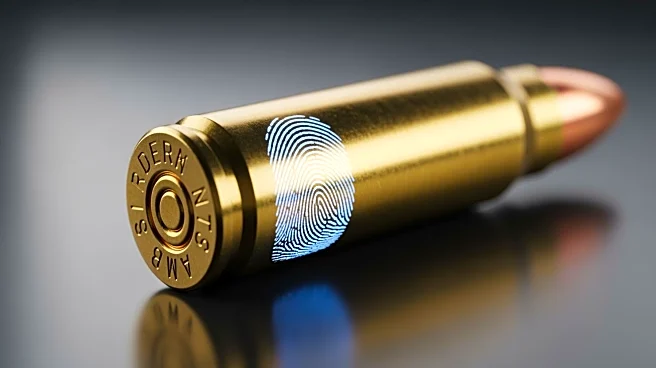What's Happening?
Researchers at Maynooth University in Ireland have developed a novel method to recover fingerprints from fired bullet casings, a breakthrough in forensic science. Dr. Eithne Dempsey and Dr. Colm McKeever have created an electrochemical process that reveals
fingerprints on brass casings, even after exposure to the intense heat of gunfire. This method uses environmentally friendly polymers and requires minimal energy, producing clear fingerprint images almost instantly. The process involves placing a brass casing in an electrochemical cell with a chemical solution, where a low electrical voltage draws chemicals to the surface, filling gaps between fingerprint ridges. This technique has shown durability, working on samples aged up to 16 months, and could potentially be adapted for other metallic surfaces.
Why It's Important?
This development holds significant implications for criminal investigations, as it challenges the assumption that firing a gun destroys fingerprint residues on casings. By potentially linking ammunition casings back to the person who loaded the gun, rather than just the firearm, this method could enhance the accuracy and scope of forensic analysis. The technique's use of non-toxic materials and low-cost equipment makes it accessible and practical for law enforcement agencies. If widely adopted, it could revolutionize how forensic evidence is collected and analyzed, leading to more effective crime-solving capabilities.
What's Next?
Further testing and validation are required before this fingerprint recovery method can be implemented by law enforcement agencies globally. The research, supported by Research Ireland and Maynooth University, has been published in a leading forensic science journal, marking a significant step forward. As the method is refined and tested, it may lead to the development of portable forensic testing kits, making it easier for crime scene investigators to apply this technology in the field.
Beyond the Headlines
The ability to recover fingerprints from fired bullet casings could have broader implications for forensic science, potentially leading to new investigative techniques for other types of crimes, such as arson. The method's adaptability to different metallic surfaces could expand its applications, enhancing the overall effectiveness of forensic investigations. This advancement also raises ethical considerations regarding privacy and the potential for misuse in surveillance or tracking.















